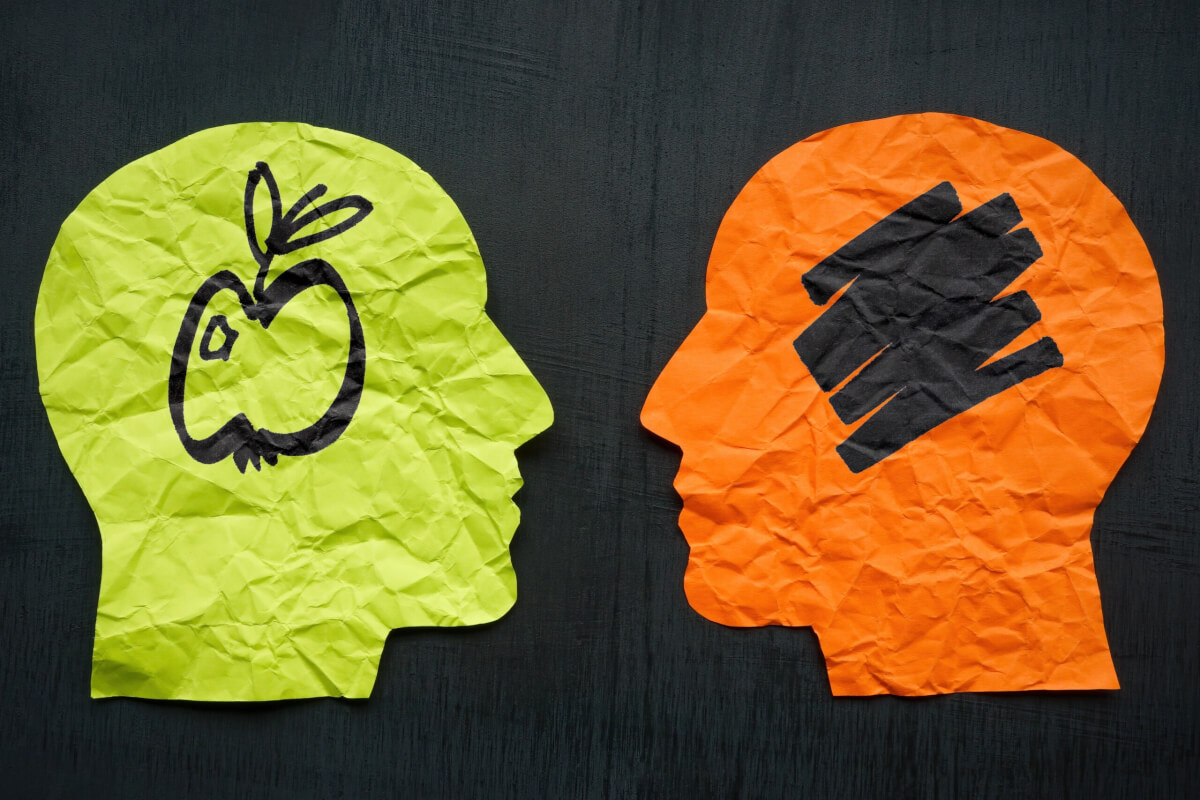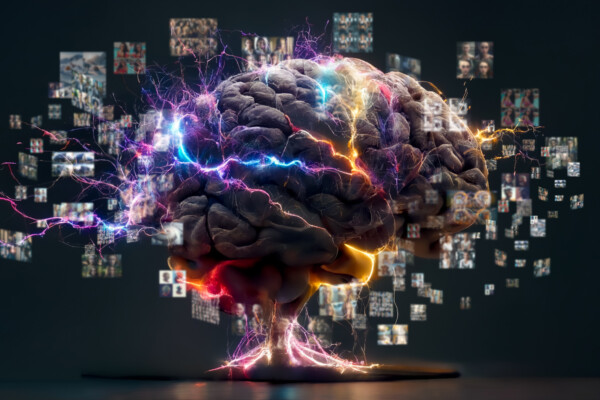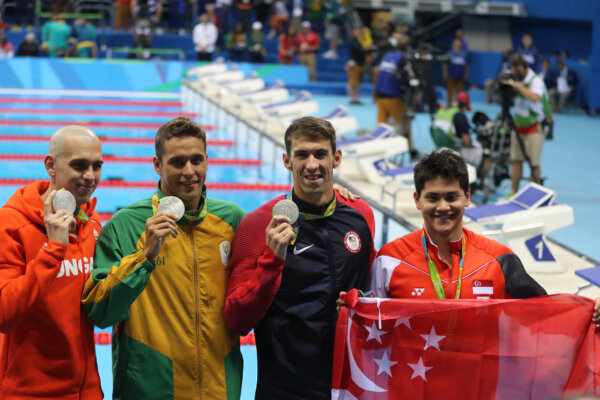
Concept of aphantasia, inability to visualize and create mental images. (© Studio Light & Shade - stock.adobe.com)
EXETER, England — Close your eyes and try to picture a loved one’s face or your childhood home. For most people, this conjures up a mental image, perhaps fuzzy but still recognizable. But for a small percentage of the population, this simple act of imagination draws a complete blank. No colors, no shapes, no images at all – just darkness. This condition, known as aphantasia, is shedding new light on the nature of human imagination and consciousness.
A recent review published in Trends in Cognitive Sciences explores the fascinating world of aphantasia and its opposite extreme, hyperphantasia – imagery so vivid it rivals actual perception. These conditions, affecting roughly 1% and 3% of the population, respectively, are opening up new avenues for understanding how our brains create and manipulate mental images.
Aphantasia, from the Greek “a” (without) and “phantasia” (imagination), was only recently named in 2015 by Adam Zeman, a professor at the University of Exeter, though the phenomenon was first noted by Sir Francis Galton in the 1880s. People with aphantasia report being unable to voluntarily generate visual images in their mind’s eye. This doesn’t mean they lack imagination altogether – many excel in abstract or spatial thinking – but they can’t “see” things in their mind the way most people can.
On the flip side, those with hyperphantasia experience incredibly vivid mental imagery, sometimes indistinguishable from actual perception. These individuals might be able to recall a scene from a movie in perfect detail or manipulate complex visual scenarios in their minds with ease.
What’s particularly intriguing about these conditions is that they often affect multiple senses. Many people with aphantasia report difficulty imagining sounds, smells, or tactile sensations as well. This suggests that the ability to generate mental imagery might be a fundamental aspect of how our brains process and represent information.
The review, authored by Zeman, delves into the growing body of research on these conditions. Some key findings include the apparent genetic component of aphantasia, as it seems to run in families. People with aphantasia often have reduced autobiographical memory – they can recall facts about their past but struggle to “relive” experiences in their minds. Interestingly, many people with aphantasia still experience visual dreams, suggesting different neural mechanisms for voluntary and involuntary imagery.
There’s a higher prevalence of aphantasia among people in scientific and technical fields, while hyperphantasia is more common in creative professions. Additionally, aphantasia is associated with some difficulties in face recognition and a higher likelihood of having traits associated with autism spectrum disorders.
These findings paint a complex picture of how mental imagery relates to other cognitive processes and even career choices. But perhaps most importantly, they’re challenging our assumptions about what it means to “imagine” something.
Methodology: Peering into the Mind’s Eye
Studying something as subjective as mental imagery poses unique challenges. How do you measure something that exists only in someone’s mind? Zeman reviewed about 50 previous studies to reach his takeaways about the condition.
Researchers across these studies developed several clever approaches to better understand aphantasia. The most common method is simply asking people to rate the vividness of their mental images using self-report questionnaires like the Vividness of Visual Imagery Questionnaire (VVIQ).
Researchers also use behavioral tasks that typically require mental imagery and compare performance between those with and without aphantasia. For example, participants might be asked to compare the colors of two objects without seeing them. Some studies have looked at physical responses that correlate with mental imagery, such as pupil dilation in response to imagining bright or dark scenes.
Brain imaging techniques, particularly functional MRI, allow researchers to see which brain areas activate during imagery tasks in people with different imagery abilities. Another interesting technique is binocular rivalry, which uses the tendency for mental imagery to bias subsequent perception. It’s been used to objectively measure imagery strength.
These varied approaches help researchers triangulate on the nature of mental imagery and its absence in aphantasia, providing a more comprehensive understanding of these phenomena.
Results: A World Without Pictures
The review synthesizes findings from numerous studies, revealing a complex picture of how aphantasia affects cognition and behavior. While general memory function is largely intact, people with aphantasia often report less vivid and detailed autobiographical memories. They can recall facts about events but struggle to “relive” them mentally.
Contrary to what one might expect, aphantasia doesn’t necessarily impair creativity. Many successful artists and writers have aphantasia, suggesting alternative routes to creative thinking. Some studies suggest that people with aphantasia have a reduced emotional response to written scenarios, possibly because they can’t visualize the described scenes.
Surprisingly, many people with aphantasia report normal visual dreams. This dissociation between voluntary and involuntary imagery is a puzzle for researchers. There’s also a higher prevalence of face recognition difficulties among those with aphantasia, though the connection isn’t fully understood.
While object imagery is impaired, spatial imagery abilities are often preserved in aphantasia. This suggests different neural underpinnings for these two types of mental representation. Neuroimaging studies show differences in connectivity between frontal and visual areas of the brain in people with aphantasia, potentially explaining the difficulty in generating voluntary mental images.
“Despite the profound contrast in subjective experience between aphantasia and hyperphantasia, effects on everyday functioning are subtle – lack of imagery does not imply lack of imagination. Indeed, the consensus among researchers is that neither aphantasia nor hyperphantasia is a disorder. These are variations in human experience with roughly balanced advantages and disadvantages. Further work should help to spell these out in greater detail,” Prof. Zeman says in a media release.

Limitations: The Challenges of Studying the Invisible
Despite the fascinating insights gained so far, research into aphantasia and hyperphantasia faces several limitations. Much of the data comes from people’s subjective reports of their inner experience, which is inherently difficult to verify objectively. Many studies have relatively small sample sizes, making it challenging to draw broad conclusions.
There’s likely significant variation within both aphantasia and hyperphantasia. Current research may be oversimplifying these conditions. While correlations have been found between imagery ability and various cognitive traits, establishing causal relationships is much more difficult.
Most research has been conducted in Western countries, leaving the role of cultural differences in shaping mental imagery experiences not well understood. As these conditions have only recently been defined, there’s little data on how they might affect individuals over their lifespan.
Discussion and Takeaways: Reimagining Imagination
The study of aphantasia and hyperphantasia is forcing us to rethink some fundamental assumptions about the human mind. These conditions challenge our understanding of what constitutes conscious experience. Can you be conscious of something you can’t mentally picture?
The existence of people who function well without mental imagery highlights the brain’s remarkable adaptability and the diverse ways humans can think and process information. Understanding these differences in mental imagery could lead to more personalized teaching methods that cater to different cognitive styles.
This research might inform new approaches to treating conditions like PTSD, where intrusive mental imagery plays a key role. Insights from aphantasia could influence how we approach visual processing and representation in AI systems. The study of extreme imagery also raises intriguing philosophical questions about the relationship between perception, imagination, and reality.
As research in this field progresses, it’s likely to yield even more surprising insights into the nature of the human mind. For now, it serves as a powerful reminder of the diversity of human cognitive experience. What we take for granted as a universal human ability – to “see” with our mind’s eye – turns out to be just one way of experiencing and interacting with the world. In a very real sense, we all live in different mental worlds shaped by our unique cognitive abilities and limitations.
The next time you close your eyes and visualize an image, consider the remarkable feat your brain is performing – and marvel at the fact that for some people, this everyday magic remains forever out of reach.










